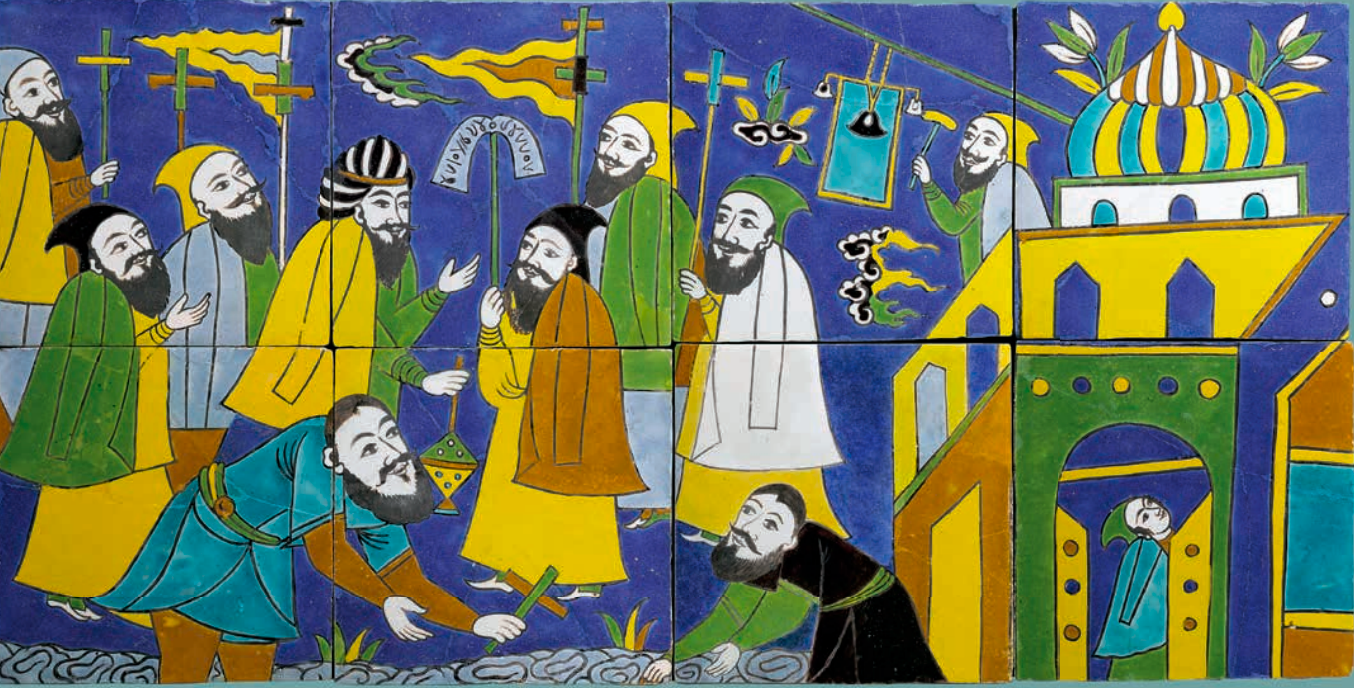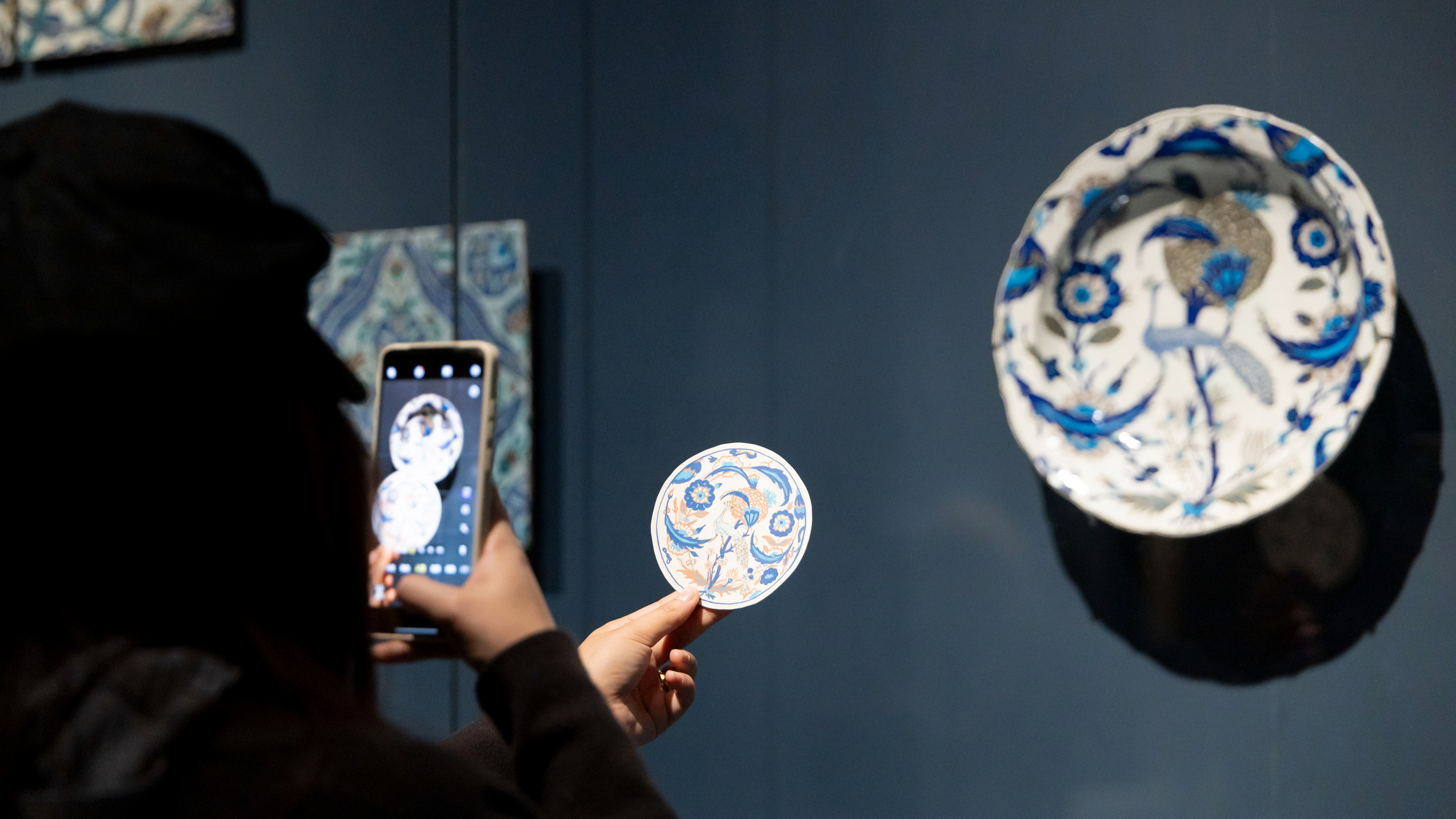

With the wooden box boards removed, the treasure of the National Archaeological Museum in Naples, Italy, "The Back of Venus" was revealed at the Pudong Art Museum on the banks of the Huangpu River in Shanghai. This ancient Roman marble sculpture from the 1st century AD was reproduced The extraordinary beauty of Venus.
"Beautiful Lands: Collections of the National Archaeological Museum of Naples" will be on display at the Pudong Art Museum from December 21. As one of the most important archaeological museums in the world, the National Archaeological Museum of Naples, Italy has the most complete collection of ancient Roman sculptures and murals of Pompeii in the world. This exhibition is not only a display of the ancient Roman civilization 2,000 years ago, but also many national treasure-level precious exhibits left Italy for the first time. "The Paper Art Review" directly hit the exhibition site yesterday.

After unpacking the treasure of the Naples National Archaeological Museum, "The Back of Venus"
"The moment I opened the box and saw the beautiful Venus in front of me, I couldn't express my excitement. Pudong Art Museum has the opportunity to get in touch with such works of art and history and show them to the public. I also feel that Very proud." Li Minkun, deputy general manager of Lujiazui Group and chairman of Pudong Art Museum, said at the unboxing ceremony of "Venus's Back" on December 14.

Exhibition site, "The Back View of Venus" (detail)
Facing the beauty of Venus, looking at the model of Western art
In ancient Greek and Roman mythology, Aphrodite (Venus) symbolized beauty. She is the god of beauty, possessing all the talents related to beauty-sweet smile, charming eyes, agile demeanor, and her body is the embodiment of beauty.
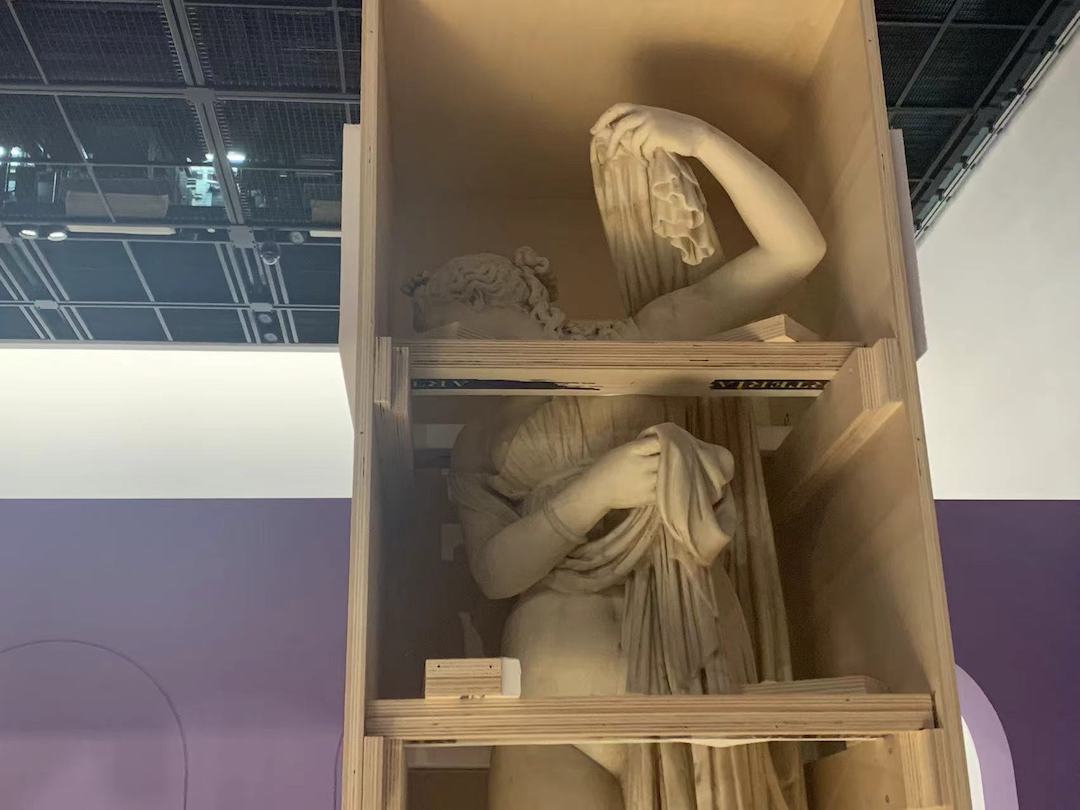
"The Back of Venus" Marble Unpacking Scene

"The Back of Venus" Marble Unpacking Scene
When only one side of Venus was exposed in the wooden box, the people present began to exclamate. This work is called "The Back View of Venus". Although it is a replica of ancient Rome in the second century AD, it still shows the softness of ancient Greek sculptures 2,500 years ago.

"The Back of Venus" Marble Unpacking Scene
When the box is fully opened, Venus is fully revealed—this is the posture of the goddess raising her robe before taking a bath. Looking around the work, Venus's head-turning gesture reflects the natural beauty of her body shape, and the contrast between the lines of the robe and the curves of the body shows a balance. She seems to be admiring her own reflection in the water, and implies her satisfaction with this beauty. This sculpture embodies the unique vision of the sculptor Praxiteles (370-330 BC), who looks at the relationship between humans and nature from a new perspective.

"The Back of Venus", marble, 2nd century AD, collected by the National Archaeological Museum of Naples, Rome
The sculptor Praxiteles was good at describing the characters in myths and legends into ordinary daily life, with a soft and delicate style, full of lyricism, which established the artistic characteristics of Greek sculpture in the fourth century BC. Some analysts say that the body part, left arm, right hand and right leg of the current sculpture were repaired later. Although traces of repairs on the right leg can be seen at the scene, it does not hinder the beauty of the goddess at all.
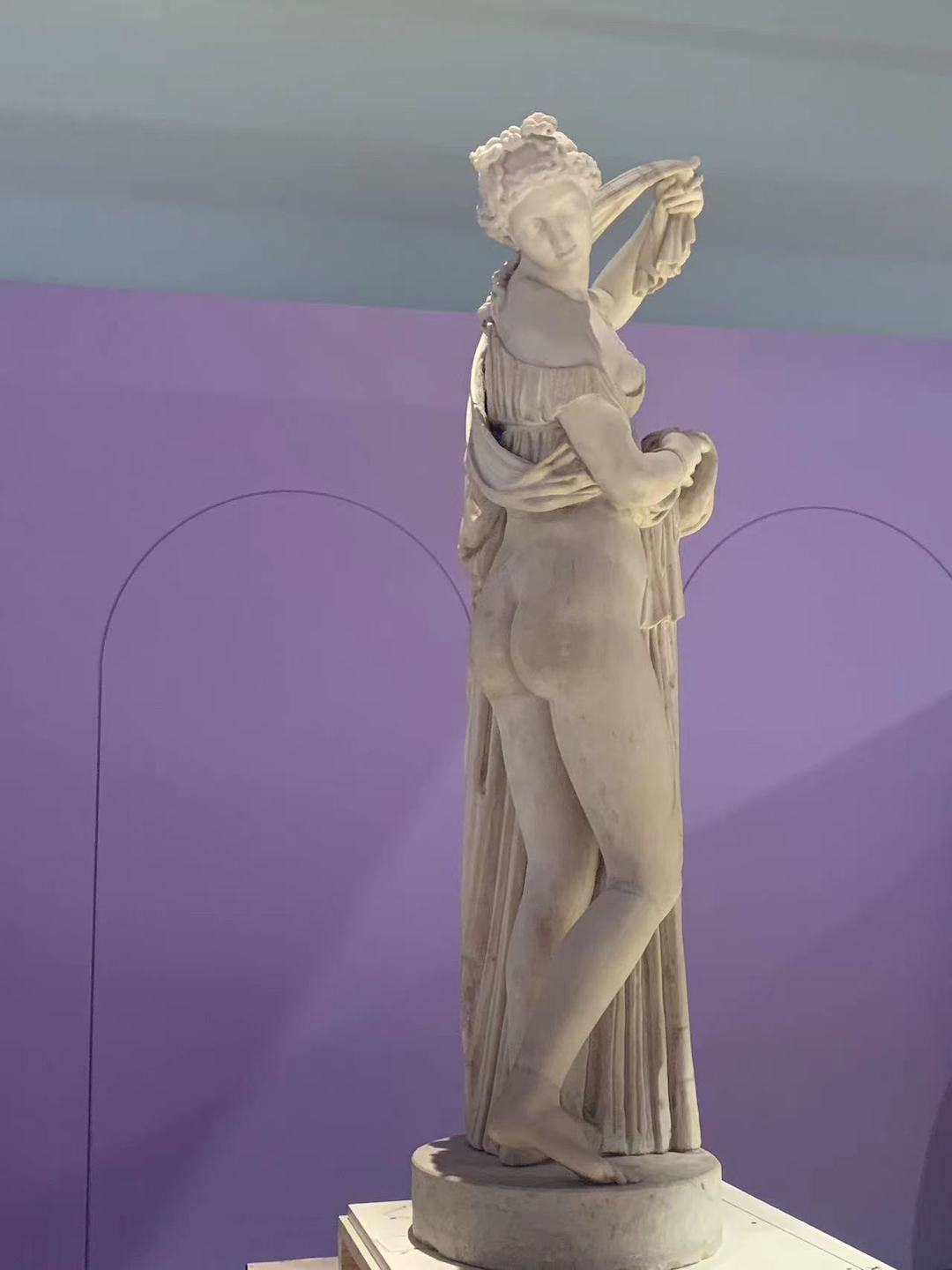
"The Back View of Venus" at the exhibition site
In addition to "The Back of Venus", there are two other sculptures of Aphrodite (Venus) in this exhibition, which are separately located in the exhibition hall on the first floor. Rose (Venus and Cupid) and Reclining Aphrodite.
At the exhibition site of the exhibition hall on the third floor, Apollo, Athena, Diana, the goddess of light, etc. have been placed in the exhibition booths, but in order to better protect them, these sculptures from 2,000 years ago are temporarily covered, and the exhibition also presents many Small architectural decoration.
In addition, The Paper reporter also saw a sculpture of "Asclepius" over 2 meters at the exhibition site. Asclepius (also known as Aesculapius), the son of Apollo and Colonis, was said to have brought the dead back to life, so he was punished by Jupiter (Zeus) with thunder, Later, it is considered the patron saint of health. When a plague broke out in Rome in 293 BC, people sought refuge with Asclepius and built a temple to him on the island of Tiber.
In the exhibition, Asclepius is dressed in a robe and holds a snake-wound staff in his right hand; on the left near his feet, a round stone implement hints at his close connection with Apollo. The snake was the symbol of Asclepius, assisting the god of medicine in his healing.
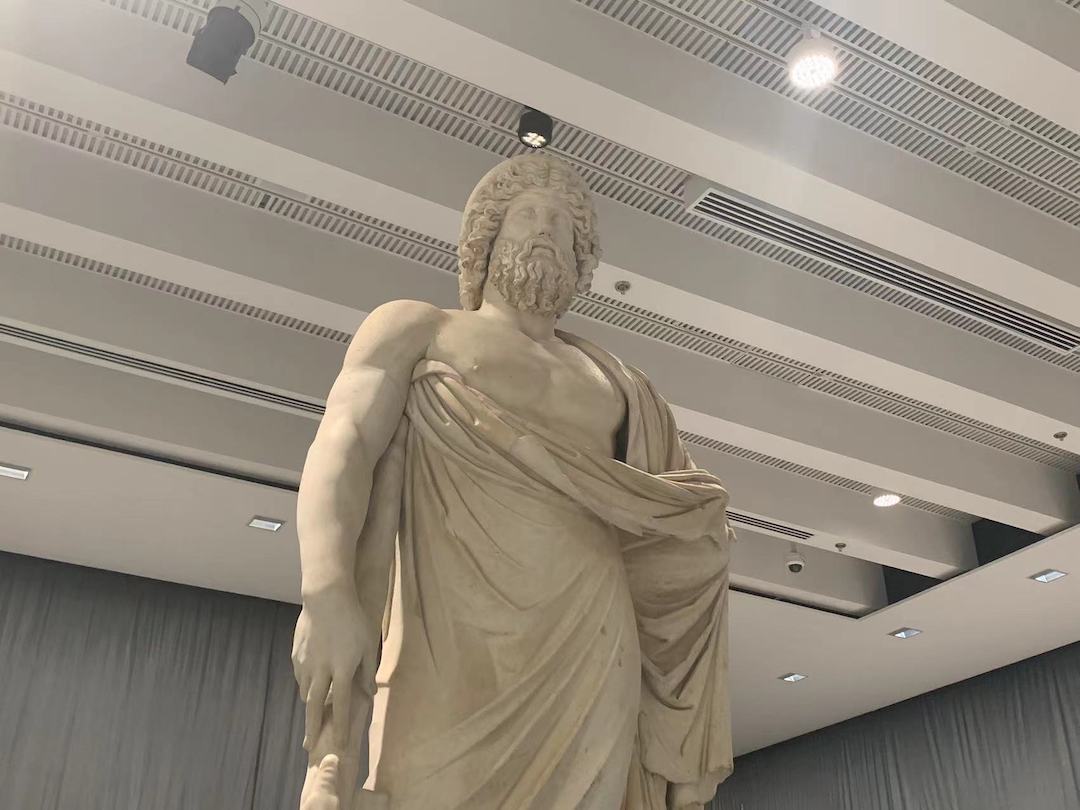
"Asklepius" at the exhibition site (Darling, 2nd century AD, collected by the National Archaeological Museum of Naples, Rome)
Relive life in Pompeii
When it comes to the National Archaeological Museum of Naples, it is natural to think of the ancient city of Pompeii. At the end of AD 79, a week after several earthquakes and other signs of volcanic activity, Mount Vesuvius erupted, burying Pompeii, Herculaneum and the Gulf of Naples under volcanic ash overnight, villages, farms and countless lives Destroyed within 24 hours, time stood still until archaeologists rediscovered them nearly 1,700 years later.
Pompeii had about 20,000 inhabitants just before the disaster, and most of them lived in holiday villas, which are also evidence of Pompeii's endless wealth, richness and comfort - bedrooms, dining rooms and even garden murals and sculptures show the style and splendor of Pompeii's wealthy families .

"Naxisos" Painted mural, 1st century AD, collection of the National Archaeological Museum of Naples, Pomme
There are murals and living utensils in the exhibition to reveal the rich life of the Pompeii people. One of the murals depicting the mythical "beautiful boy" Narcissus was excavated in The House of the Silver Wedding in Pompeii. The site was excavated in 1893; in the same year, King Umberto I of Italy and Queen Margherita celebrated their 25th wedding anniversary, and the residence was named after it. Narcissus in the painting is the child of the river god and the nymph, and also the "world's most beautiful boy" in Greek mythology. He is arrogant by nature and never accepts anyone's courtship; Turned into daffodils.

Head of Pseudo-Seneca (Pirates) Bronze 1st century AD, National Archaeological Museum of Naples, Herculaneum
The Paper reporter also saw the bronze "Pseudo-Seneca Head" from Herculaneum at the exhibition site. For art students, he also has a more famous name "Pirate". But Seneca was by no means a pirate, but an ancient Roman statesman, Stoic philosopher, tragedian, and orator.
In 65 AD, Seneca committed suicide because of his suspected involvement in the assassination of Nero. His peaceful death has traditionally symbolized the death of the ideal philosopher. Seneca wrote a lot in his life. There are 12 talks and essays on morality in the existing philosophical works, 124 essays and essays collected in "Letters of Morals" and "Natural Problems", and 9 other literary works such as tragedies. However, some modern scholars believe that this statue is not Seneca himself, hence the name "Pseudo-Seneca". In the inaugural exhibition "Cai Guoqiang: Traveling and Returning" at the Pudong Art Museum, Cai Guoqiang had a dialogue with many sculptures on display, including this bust, which constituted a continuation of exchanges between different civilizations.
The exhibition itself is also one of the series of activities of the "2022 China-Italy Culture and Tourism Year". The exhibition also involves the exchanges between the Chinese Han Dynasty and the Roman Empire. "A Place of Absolute Beauty: Treasures from the National Archaeological Museum of Naples" will open on December 21.
